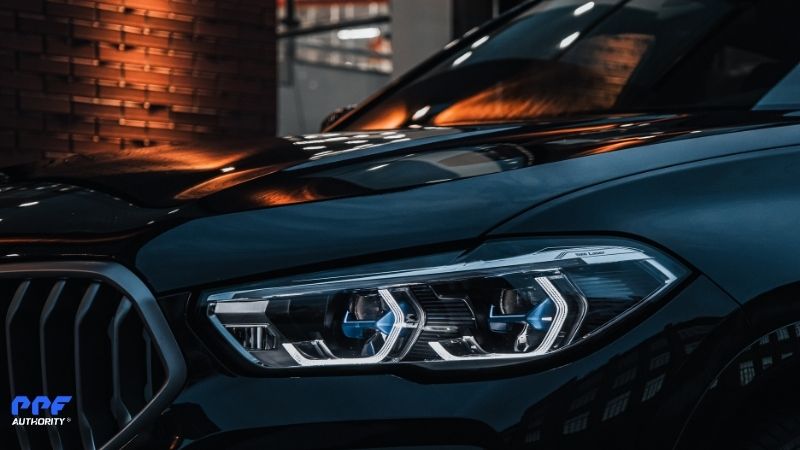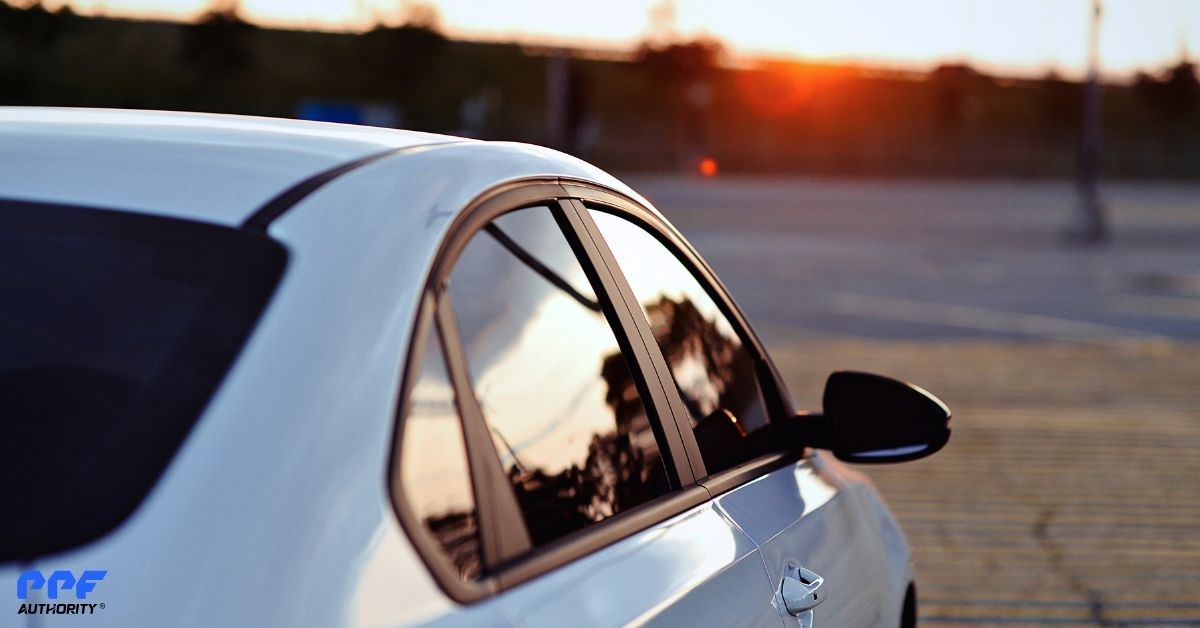Darkening headlights and tail lights is a popular way to enhance your vehicle’s aesthetics and create a sleek, custom look. Two common options for achieving this effect are Slate Paint Protection Film (PPF) and traditional tinting. While both can add a darker finish to your lights, they differ significantly in functionality, durability, and benefits.
In this article, we’ll compare Slate PPF and tint, highlight their differences, and explain why Slate PPF is often the superior choice for darkening your headlights and tail lights.
What Is Slate PPF?
Slate PPF is a light-to-medium gray tinted protective film specifically designed for automotive lights. It combines the benefits of paint protection film with a stylish, darkened appearance for headlights and tail lights.
Key Features of Slate PPF:
- Protection: Shields lights from scratches, chips, yellowing, and UV damage.
- Tinted Appearance: Adds a subtle or medium gray tint, depending on your chosen shade.
- Durability: Offers long-lasting performance with self-healing properties to repair minor scratches.
What Is Light Tinting?
Tinting involves applying a dyed or adhesive film directly to the surface of headlights or tail lights to create a darkened look. Tint is available in a variety of shades, ranging from lightly smoked to very dark.
Key Features of Tint:
- Customization: Provides a wide range of tint levels for varying degrees of darkness.
- Aesthetic Impact: Delivers a bold, smoked-out appearance for headlights and tail lights.
- Cost-Effective: Generally more affordable upfront compared to Slate PPF.
Comparing Slate PPF and Tint for Darkening Lights
1. Durability and Longevity
Slate PPF:
- Made from high-quality polyurethane, Slate PPF is highly durable and resistant to wear.
- Protects lights from physical damage, such as scratches, chips, and cracks.
- Can last 5–10 years with proper maintenance.
- Features self-healing technology that repairs minor scratches with heat exposure.
Tint:
- Traditional tints are more prone to peeling, bubbling, and fading over time.
- Offers little to no protection against physical damage.
- May require frequent reapplication as it deteriorates more quickly, especially under UV exposure.
Winner: Slate PPF offers superior durability and longer-lasting performance.
2. Protection Capabilities
Slate PPF:
- Protects against UV rays, which prevents yellowing and fading of lights.
- Acts as a barrier against rock chips, road debris, and other impacts.
- Shields lights from chemical stains, including road salt, bug splatter, and bird droppings.
Tint:
- Provides minimal protection beyond aesthetics.
- Does not effectively prevent damage from impacts or environmental hazards.
Winner: Slate PPF provides both protection and a darkened appearance, making it the better all-in-one solution.
3. Aesthetic Impact
Slate PPF:
- Offers a sleek, modern, and subtle gray tint for a refined look.
- Available in various shades to match your vehicle’s style, from light gray to medium-dark finishes.
- Maintains a polished, bubble-free appearance when professionally installed.
Tint:
- Can achieve a wide range of darkness levels, including extremely dark finishes.
- May develop bubbles, creases, or uneven edges over time if not applied correctly.
Winner: Both Slate PPF and tint offer attractive options, but Slate PPF stands out for its polished, professional look and customizable shades.
4. Light Output and Functionality
Slate PPF:
- Designed to maintain light output and visibility while adding a tinted appearance.
- Compliant with most safety regulations due to its moderate tint level.
Tint:
- Darker tints can significantly reduce light output, which may compromise safety at night or in poor weather conditions.
- Heavily tinted lights may not comply with local laws, leading to fines or required removal.
Winner: Slate PPF provides a safer option by balancing aesthetics with functionality.
5. Maintenance and Ease of Care
Slate PPF:
- Features hydrophobic properties, repelling water, dirt, and grime for easier cleaning.
- Prevents scratches and stains, ensuring the lights remain clear and easy to maintain.
Tint:
- Tints can attract dust and dirt, making them harder to clean.
- Scratches, peeling, or bubbling can further complicate maintenance.
Winner: Slate PPF simplifies maintenance with its protective and hydrophobic features.
6. Removability and Reversibility
Slate PPF:
- Can be easily removed by a professional without damaging the lights.
- Allows you to revert to the original look or upgrade to a different shade of PPF.
Tint:
Tint removal can be challenging and may leave adhesive residue or damage the surface underneath.
Winner: Slate PPF is more versatile and easier to remove.
7. Cost and Value
Slate PPF:
- Higher upfront cost but offers long-term value through durability and protection.
- Saves money by reducing the need for light replacements or frequent reapplications.
Tint:
More affordable upfront, but lower durability may result in higher costs over time due to repairs or reapplications.
Winner: Slate PPF provides better value over the life of your vehicle.
When to Choose Slate PPF
- You want a sleek, modern, and refined look for your lights.
- Protection is a priority, and you want to prevent yellowing, cracking, or damage.
- You’re looking for a long-term solution that balances style with functionality.
- You prefer a reversible option that won’t damage your lights.
When to Choose Tint
- You’re on a tight budget and want a cost-effective way to darken your lights.
- You want more extreme tint options for a highly customized appearance (but ensure compliance with local laws).
- Protection and long-term durability are less of a concern.
Conclusion
Both Slate PPF and traditional tinting can darken your headlights and tail lights, but Slate PPF offers far more than just aesthetics. Its durability, protection against damage, ease of maintenance, and long-lasting performance make it the superior choice for most drivers.
While tinting may appeal to those on a tighter budget or seeking extreme customization, its lack of protection and tendency to deteriorate over time are significant drawbacks.
If you’re looking for a stylish, functional, and protective solution to enhance your vehicle’s lights, Slate PPF is the clear winner. For the best results, always work with a professional installer to ensure a flawless application and maximize the benefits of Slate PPF.

